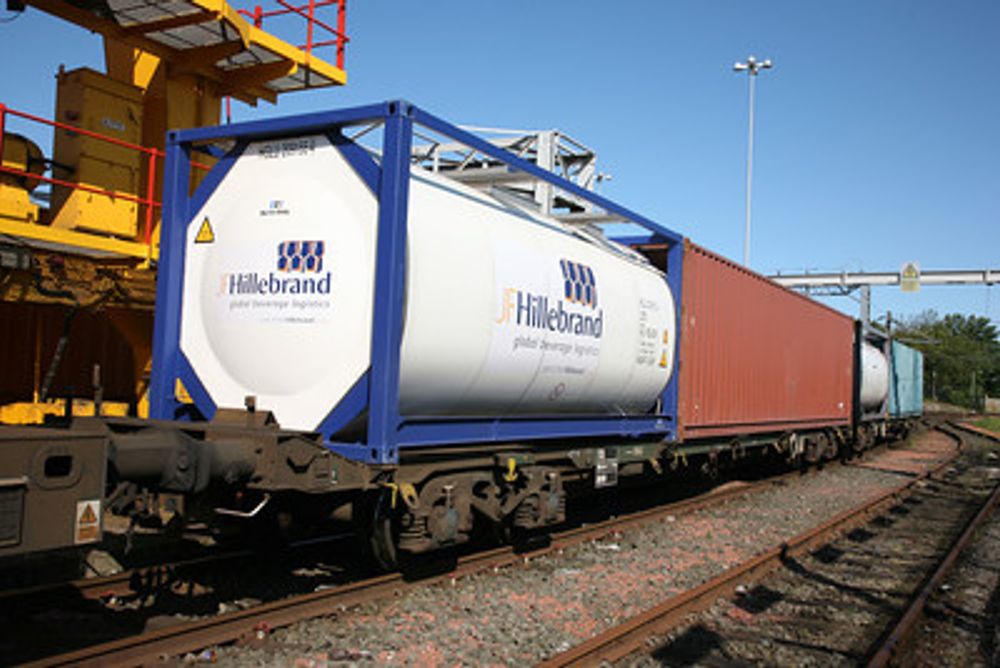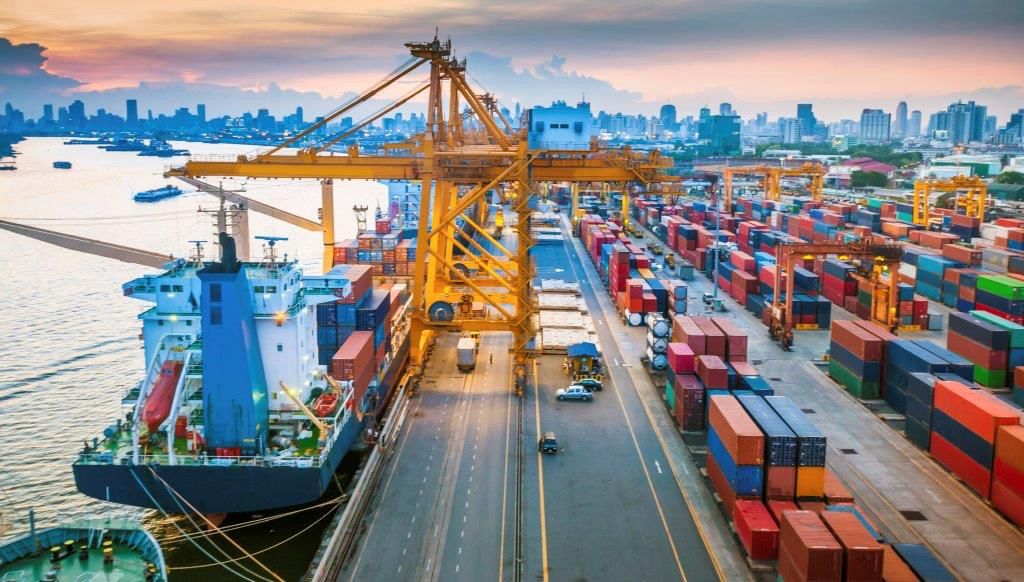Now it might not be surprising that Marc Graham, UK branch manager for JF Hillebrand, the world’s biggest drinks logistics and shipping company, should be advocating the importance of finding the right supply chain company to work with, but it’s not just getting your wine from A to B that they can help you with, they can help you buy better wine too.

Anyone listening in to my conversation with Marc Graham last month, in a quiet corner of All Bar One, would have been puzzled to know what it is what we were talking about. For large parts of our chat were all about the importance of finding the right partner to be with, listening to their needs and working together to create a true, lasting bond together. Never mind all that business about who it was you were going to get into bed with.
But when it comes to relationships and long term partnerships, Marc Graham is the marriage counsellor extraordinaire of the drinks industry. Responsible for putting countless couples together. His primary objective, however, is to make sure one half of that couple remains the same. Namely JF Hillebrand, and the relationships it has with drinks businesses the world over. Or in his case, the UK.
It’s noticeable that JF Hillebrand does not describe itself as purely a logistics company, but a “logistics services provider”. A company that, yes, fundamentally is all about getting your goods and products from one end of the supply chain to the other, but increasingly is about planning your long term shipments so that you are always one or two steps ahead of where you need to be in terms of sourcing, buying, shipping and selling your wine and spirits.
That’s why finding the right supply chain, logistics partner “is becoming so much more important”, claims Graham.
“Gone is the day of simply moving Box A to destination B. It is how we can add value along the way.”
Real time decision making
That might mean providing all those in the supply chain online, live access to where any shipment is at any one time. Allowing them to make better planning decisions about when it is going to arrive and when they need to start putting in place their next shipment or order.
“Track and trace is far more important now,” says Graham. It is that ability to be able to offer what he calls a “complete supply chain solution,” that is where the logistics industry is so much more advanced. Far more quality “ layered information going back and forth” between producers, shippers, importers and distributors.
Ultimately JF Hillebrand is there to help companies “plan and prepare better,” says Graham. “To give them all the information and data they need so they have full visibility of their supply chain from origin to shelf. Which brings us right back to the idea of forging closer partnerships rather than being seen just as a logistics provider.”
He adds: “Giving customers more visibility about where the products are at any given time means we are able to work much more in a partnership, rather than it being seen as a simple transaction.”
That’s been the big change between how major drinks distributors now work with their logistics providers. It’s similar to the expectations the major multiples now place on their preferred suppliers. You are no longer just a provider of goods, but part of their business, helping them make decisions about what they should be buying, from where and when.

Marc Graham says it’s the added value services that logistics companies can offer that differentiates them
Graham explains: “It means our customers have access to far more information than they may previously had before. We also have experience in listening to our customers and being able to provide them with the required information and data to support their business activities etc. This could be lead-time analysis for their product master-data, on-time delivery performance, or order-to-ready analysis, to name a few.”
Much of these developments are there to be seen in the bulk wine market which has really driven the way forward in making the supply chain more sophisticated and demanding, says Graham. Customers will now factor in every individual cost element, at each point in the supply chain, down to how far the wine has to be moved, in bulk, to the final bottling destination in the end market.
Shipping better
One of the big changes to come through closer logistics partnerships is how wine is now being shipped from long haul destinations. Again lead by bulk wine, where wine is no longer simply being shipped direct, but stopped and moved from vessel to vessel. It might take more time to get to its destination but the efficiencies and savings made using what are known as “trans-shipments and feeder routings” makes the cost of moving the wine far more attractive.
“Three or four years ago it was much more about direct shipments, where the wine was shipped on one vessel thoughout its journey. Now more customers are exploring trans-shipment and feeder routings as there are potential savings to be made which are ‘traded-off’ against the risk in the subsequent vessel / feeder connections not being made,” says Graham.
Even though it might add another one or two weeks to the overall shipment lead-time it is a delay more customers these days are willing to take if it shaves some more cost off the bottom line.
“Take the UK, for instance, where we are seeing more demand for feeder services into the North West andNorth East, despite the additional lead-time and potential risk of delay if the connection in Europe is not made.”
Inland savings

The vast majority of wine is now shipped by train rather than lorry around the UK
The savings continue when the wine arrives in market. “In the UK we now rail around 85% of bulk wine inland that is rail compatible,” says Graham.
It has meant taking more lorries off the road, and making both fuel and environmental savings along the way. It is also about getting the product as close as possible to the final “delivery point” and “provide further flexibility for the bottler when calling the product in”.
“We transitioned from road to rail from 2010 onwards. It also means there are no traffic delays and you are pretty much guaranteed to run.”
More expertise
We might know JF Hillebrand for its ability to ship wine and other beverages around the world, but its logistics skills also go in to other sectors, particularly with its purchase in 2007 of Trans Ocean Distribution, specialists in flexi-tank manufacturing and bulk liquid logistics. JF Hillebrand can now tap into the expertise they have learnt from in handling all sorts of non-hazardous bulk liquids, like olive oils, fruit juices, and base oils.
It now has, for example, a range of different sized flexi-tanks that can potentially offer new solutions for wine distributors and importers. Particularly in moving more premium wines in bulk containers.
“We are seeing more demand for smaller sized flexi-tanks, down to 13,000 litres, which allows the shipper to potentially ship smaller amounts of more premium wines where demand does not warrant a standard 24,000 litre shipment”. It is something New Zealand producers are said to be looking at more closely.

Trans Ocean’s expertise in shipping other liquids has helped Hillebrand’s drinks offer
Another area Trans Ocean is developing is a 40’ flexi-tank to be shipped in temperature controlled units – known as Reefers – used predominantly for fruit juice shipments where product stability and a controlled temperature is key. “This could easily be adopted and used for wine to keep a more premium product stable and temperature controlled,” said Graham.
“We are looking at other markets and what implications there might be for wine.”
Opening up new markets
With less wine to go around in 2018 due to the poor 2017 global harvests it means the likes of JF Hillebrand are having to work much more in countries that have been on the outside of the mainstream wine industry. Which presents new challenges and opportunities, says Graham.
“We have to look ahead at which wine origins are most likely to prosper from the global wine supply shortage. It’s a case of always looking to stay ahead of the market.”
Helped by the fact it has dedicated offices in 60 plus countries and local networks to quickly source and ship wine from potential new suppliers.
Talking to the trade
Graham says a key part of his role in the UK is to be constantly talking to existing and potential new customers, inviting them to visit its key ports or rail terminals so that they can see for themselves how the whole process works.
“Until you stand by one of large vessels in a port you can’t really put into perspective what you are working with. We are always looking to help and provide that support. It’s all about seeing the bigger picture of how the whole supply chain process works.”
Working with those wine businesses, retailers, distributors and importers who can see that bigger picture is where its own growth opportunities will come from, says Graham.
It’s probably best, though, not to talk about what it takes to get into bed with someone for the first time in the local All Bar One.
- This is an adapted article from one first published on VINEX, the bulk wine online trading site.









































